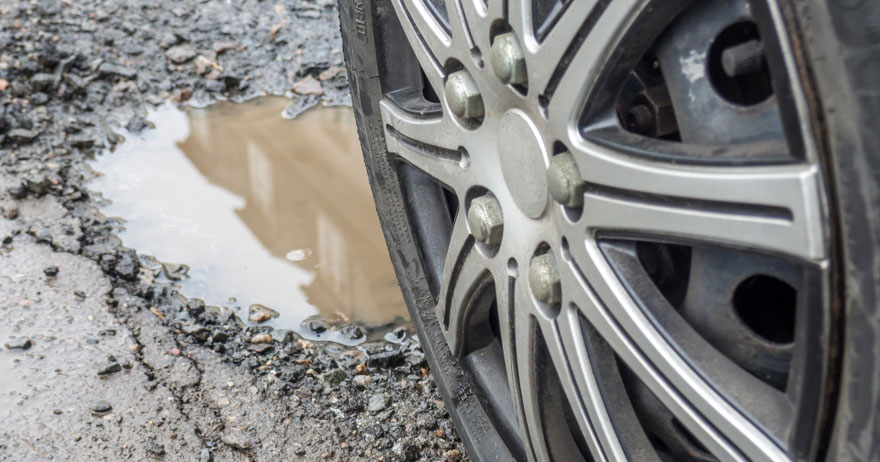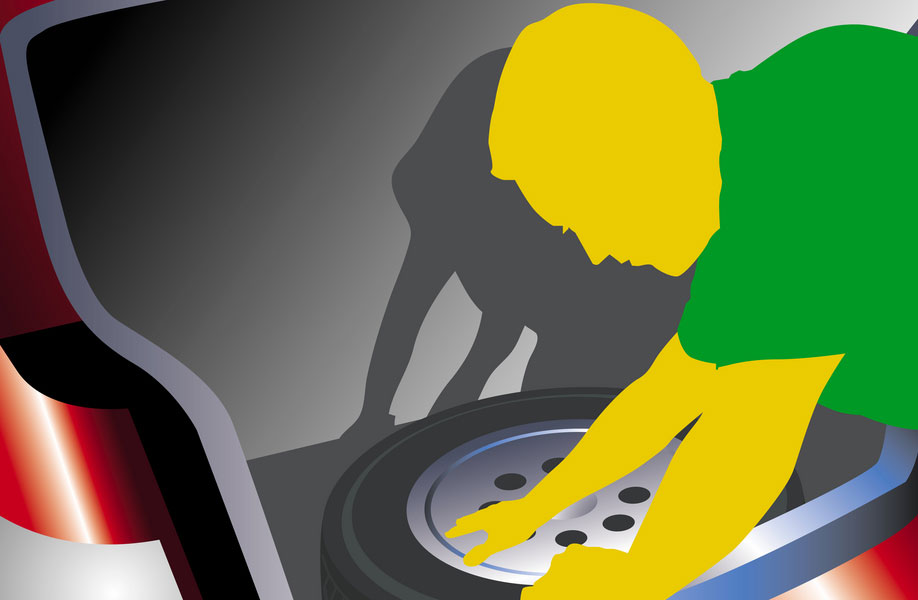
What damage can potholes cause to tyres and vehicles?
Tips to avoid potholes and what to do if you can’t
Poor road surfaces, such as those caused by unrepaired potholes, are one of the major concerns for drivers in and around Brisbane. In last year’s RACQ Unroadworthy Roads Survey, an incredible 600 sub-standard roads across Queensland were nominated – 60% of these nominations cited poor road surface as the reason for the nomination.
In this article, you’ll learn what damage hitting a pothole could do to your tyres and vehicle, how to spot that damage, and how to avoid damage caused by potholes.
What damage could a pothole do to your tyres and vehicle?
Pothole damage is often visible, but can also be invisible.
Invisible damage that hitting a pothole can cause includes damage to the control arm. This connects the steering and wheels. If this is bent or damaged, then your ability to steer correctly could be impeded, though you may not notice this until you need to take emergency action.
Your suspension may also be damaged by hitting a pothole at speed, and this could cause the vehicle to veer from side to side, or the vehicle to shake.
Depending on how hard the pothole is hit, the engine could move off its mounts. Engine misalignment means the engine must work harder, and this will cause damage over a longer time.
Other damage that is visible includes bent wheel rims, body damage, and, of course, damage and punctures to tyres.
How do you spot tyre and vehicle damage after hitting a pothole?
Fortunately, unless you are driving at speed, the chances of a pothole puncturing a tyre are slim. However, bent wheel rims, body damage, and damage to shocks and struts are more common. Your tyres may also be damaged, and you might suffer issues with your wheel alignment or wheel balancing.
If you notice any of the following signs of tyre or vehicle damage, you should take your vehicle in for inspection immediately:
- A tyre looks low – this could be caused by a slow puncture, often caused by a bent wheel rim
- The tyre sidewall is bulging, which indicates there is internal damage to the tyre and the steel belts and nylon in the tyre have separated
- Your vehicle pulls left or right while you are driving, which indicates the wheels have become misaligned
- The steering wheel vibrates while you are driving, a clear indication that your wheels have become imbalanced
- You hear a strange and consistent noise from under the car while driving, which could mean that part of the car or wheel is rubbing against the suspension
How can you avoid damage from potholes?
Potholes will always exist on roads. They are caused by water seeping beneath the tarmac through cracks, forcing the road to rise. The weight of traffic causes the tarmac to break and a pothole to form. As more traffic rolls over the pothole, it becomes worse. Potholes are a fact of life – like death and taxes. Therefore, it’s important to know how to avoid the damage they might cause:
- First, always make sure that your tyres are correctly inflated. This will help your tyres and vehicle absorb any impact should you hit a pothole.
- Drive slower, especially on roads that you don’t know or that you know to be rough.
- Ensure that you remain focused on the road ahead. Don’t get distracted.
- Keep your distance from the vehicle in front, so you have time to react and can see what is approaching.
- Take care if you swerve to avoid a pothole, especially on highways when driving at speed. Hitting a pothole can cause damage to your vehicle. Hitting another vehicle could be far worse.
- A road with one pothole is usually a road with more. The first pothole that you hit or avoid should be the warning to be more focused and defensive in your driving style.
- If it is impossible to avoid a pothole, take the following action to retain control of your vehicle: slow down, steer straight, and don’t slam on your brakes.
Getting your vehicle checked after hitting potholes
If you hit a pothole and notice any of the signs of impact damage, you should take your vehicle to a mechanic or tyre shop. Tell them what happened and the signs of damage that you have noticed, and make sure that they check:
- Wheel alignment and balance
- Damage to the internal tyre
- Wheel rims for cracks and bending
- Damage to the engine mount
- Shocks, struts and suspension
If repairs are needed, get an estimate and check out your insurance cover – it may help to pay for damage caused by potholes.
For all your tyre needs, contact Darra Tyres – we’ll see you right.
Keeping your family and fleet safe on the road,
Kevin Wood









